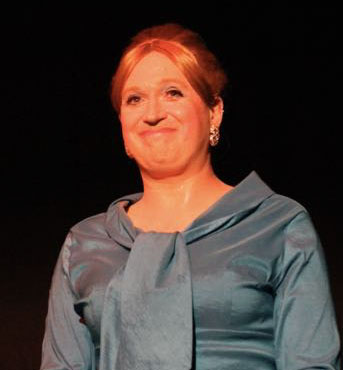
[tta_listen_btn listen_text=”Click to listen to this story” pause_text=”Pause” resume_text=”Resume” replay_text=”Replay” start_text=”Start” stop_text=”Stop”]
A study by Paulie McDermid, an incoming research Fellow in refugee reception at York University’s Centre for Refugee Studies, looks to advance knowledge of drag artists with refugee or migrant backgrounds and provide greater understanding on how they shape their identities and sense of belonging as they navigate making livable futures for themselves and others in Canada.
Not long after McDermid moved to Canada from Ireland in 2008, he volunteered with a settlement organization supporting migrants and refugees. As someone who identifies as queer and a migrant, he felt invested in helping those with shared experiences. He asked the organization what efforts were being made for those groups. “We don’t have any of those here,” he was told.
“I thought, ‘That can’t be the case,’” McDermid recalls. “It stuck with me.”
A decade later, that memory – that lack of understanding, and even awareness, of an entire group of people – proved to be a point of inspiration for his recent doctoral research study titled “Drag Across Borders: Negotiating 2SLGBTQ+ Being and Belonging Through Drag Personas.” Supervised by Canada Research Chair in Citizenship, Social Justice and Ethno-Racialization Chris Kyriakides, the paper explores intersectional identities and experiences of belonging among 2SLGBTQIA+ drag artists with a refugee or other migrant background.

McDermid notes that drag performers, like refugees and migrants, push against borders; they engage in actively cultivating a sense of who they are – in their drag personas and selves as “the newly arrived” – along with a sense of community. McDermid sought to learn more about how they do so. “I was interested in asking people about the relationship between the persona that they invent and the person they are,” says McDermid.
He sought to answer questions such as, “What meanings do drag personas hold for the identities of refugees and other migrants?” and, “In what ways, as refugee or migrants, do they create a sense of belonging in their new home?”
McDermid interviewed 19 drag performers from 16 different countries, now living across Canada, and discovered some common threads among the rich diversity of their lived experiences.
The study, overall, highlighted how these refugee and migrant drag artists make careful selections from their history and experiences to create their drag personas, weaving together gender, ethnicity, race, culture, sexuality, as well as “given” and “chosen” family.
McDermid found that families had significant influences on their drag persona and sense of self, countering what McDermid calls the common “western queer narrative” where given family is framed as a source of potential rejection. Instead, says McDermid, “even in families where some form of rejection was experienced, for the people I interviewed, family was positioned as a really profound resource that helped them secure their sense of belonging.” The drag personas they then created would draw upon family, sometimes memories of family, from their countries of origin, to inform their drag personas in Canada and facilitate who they are in the present.
McDermid’s study also found that participants exhibited notable agency in creating a sense of belonging – typically through the choices they make in cultivating relationships and community. “The drag artists constantly emphasized what they were doing socially and relationally for the communities in which they find themselves and that they’ve created,” McDermid says. For example, one Latinx drag artist who participated in the study created groups for Latinx queer people, Latinx refugees and Latinx HIV-positive individuals. “She was creating community that reflected the elements of her self that she had invested in her drag persona,” he says.
McDermid hopes those two findings – among others in the study – help counter narratives that strip drag performers, and especially refugees or migrants, of agency. For example, he notes how refugees can often be positioned by western countries as “objects” of rescue. Instead, McDermid’s study highlights how these artists push back against a range of anti-migrant and anti-trans/queer forces that seek to exclude and dehumanize them. He adds that refugee/migrant drag artists are also active shapers of their world in ways that are reflective of their art too.
“Drag performance is different from an actor being given a script to follow. Drag artists are the authors of their own script. They decide what they want to do. Theirs is a ‘total’ art of self-presentation,” he says.
Most of all, McDermid hopes his study can build on and reshape knowledge about those who make up this cross-section of identities. Moving forward, he is looking to do that by sharing his work in as many different venues as possible. He’s already partnered with the Centre for Refugee Studies and the Positive Spaces Initiative of the Ontario Council of Agencies Serving Immigrants to share findings from the study.
He’s also pursuing workshops, such as one earlier this year funded by the Office of the Vice-President Research & Innovation for York students and wider community members, which took place at The 519 community centre on Church Street in Toronto. It featured two drag artist participants in the study performing and speaking about what their drag personas mean to them as people with refugee/migrant backgrounds.
Whatever the outcome of his work is, however, what he is most proud of is having been trusted with the lived experiences of those he spoke to: “I felt humbled by the confidence they placed me in sharing those stories. The study is theirs. I’ve intervened in order to bring it together but, ultimately, it’s their stories.”
